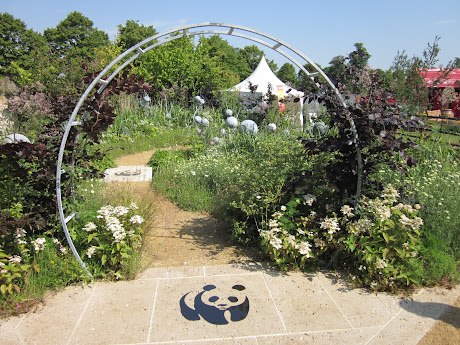Why I Care About Chalk Streams
 Around 20 years ago I quit my comfortable IT job and went back to university to study Freshwater Biology at Masters level. Several strands had come together at the time which made it necessary for me to want to do so - too many to go into detail here - suffice to say that one of them was the problem of low flows in Wiltshire's chalk streams and I was keen to do something about it.
Around 20 years ago I quit my comfortable IT job and went back to university to study Freshwater Biology at Masters level. Several strands had come together at the time which made it necessary for me to want to do so - too many to go into detail here - suffice to say that one of them was the problem of low flows in Wiltshire's chalk streams and I was keen to do something about it.
At the time the problem was publicly denied by various stakeholders, so Wiltshire Wildlife Trust recruited an army of River Monitors to regularly gather information on the state of their local river. I was one of those volunteers and our data has contributed to the acknowledgement there is indeed a problem.
So I was really pleased to see WWF's 50th anniversary garden , Why We Care About Chalk Streams at this year's Hampton Court show. It's the second time my twin passions of gardening and freshwater biology have come together this year :)
The designer, Fiona Stephenson has done her research very well and distilled it into a very clear story within her show garden. A rammed earth wall and the Portland stone entrance depict the aquifer which captures and filters the rain water until it emerges as a clear, sparkling stream. Chalk streams are one of the rarest riverine habitats we have, with a rich meadow flora of species adapted to the alkaline conditions. Jewel-like bright blue azure damselflies were already settling into the garden and giving it their seal of approval when I took this picture.
The 50 spheres are a nod to WWF's anniversary and represent exaggerated raindrops showing us the problem of lack of water is so much larger than the garden holding them. The stream runs through these until it nears the side closest to where I took the picture: then a giant plughole drains the water away and a zone of dead vegetation warns us that this is the consequence should over abstraction be allowed to continue.
 Here in the UK, we each use 150 litres of water a day on average, so we are firmly part of this problem. Fiona tells me there is now agreement to provide a 'top up' facility when needed is the solution for the two rivers which were her inspiration: the Itchen and Kennet, but who actually funds this is in dispute. So in the meantime I've attached my pledge to the side of the garden to help address the problem in my own small way.
Here in the UK, we each use 150 litres of water a day on average, so we are firmly part of this problem. Fiona tells me there is now agreement to provide a 'top up' facility when needed is the solution for the two rivers which were her inspiration: the Itchen and Kennet, but who actually funds this is in dispute. So in the meantime I've attached my pledge to the side of the garden to help address the problem in my own small way.










drinkable water is more valuable than gold. this autumn/winter i will be investigating mini drip irrigation systems for my wee patch.
ReplyDeleteA lovely garden with a powerful message. Water is so important, hopefully it will realised before it's too late
ReplyDeleteThe Kennet!
ReplyDeleteI'd love to fish that river. Some beautiful Trout there and generally so clean like most chalk streams.
So glad there's an army of people like you VP, to look after our ancient rivers.
From an angler's point of view, thank you, it's much appreciated.
Petoskystone - it's going to be one of the major bones of contentions in the decades to come...
ReplyDeleteBridget - welcome! It's depressing to think that I was working on this in the early 1990s, yet the solution is yet to be implemented
Chris - it's a lovely river. As well as the river monitoring work, I photo surveyed the Kennet in the 1990s as part of Wilstshire Wildlife Trust's otter project. The bridges in this garden must have been inspired by the Itchen as the Kennet has some lovely white railing bridges, especially at the Wiltshire end of things.
I've also researched salmon and trout populations for my masters degree. Fished the Nant Gwernol in Wales and the Colne in Gloucestershire for that and have happy memories of the meadows along the banks of the Colne as well as measuring 1,000s of fish!
How lovely to have twin loves come together so well. Harnessing grey water is one of the things I am keen to do once we move, water is too precious to waste the way we do. I loved what I saw of the garden on the TV coverage of the show, and enjoyed hearing Fiona explain it all too.
ReplyDeleteJanet - she explains things very well doesn't she :)
ReplyDeleteDo you know when you'll be moving?